The world of tennis is captivating, offering a blend of intense physical demands and sophisticated strategy. But for newcomers, the unique terminology—”love,” “deuce,” “advantage”—can make the game’s scoring seem like a baffling puzzle. Don’t let the language intimidate you!
This comprehensive guide is designed to demystify the core rules and scoring of tennis, giving you the foundation you need to step onto the court with confidence or to follow your favorite players with a clear understanding of every point.
The Tennis Court: Your Battleground
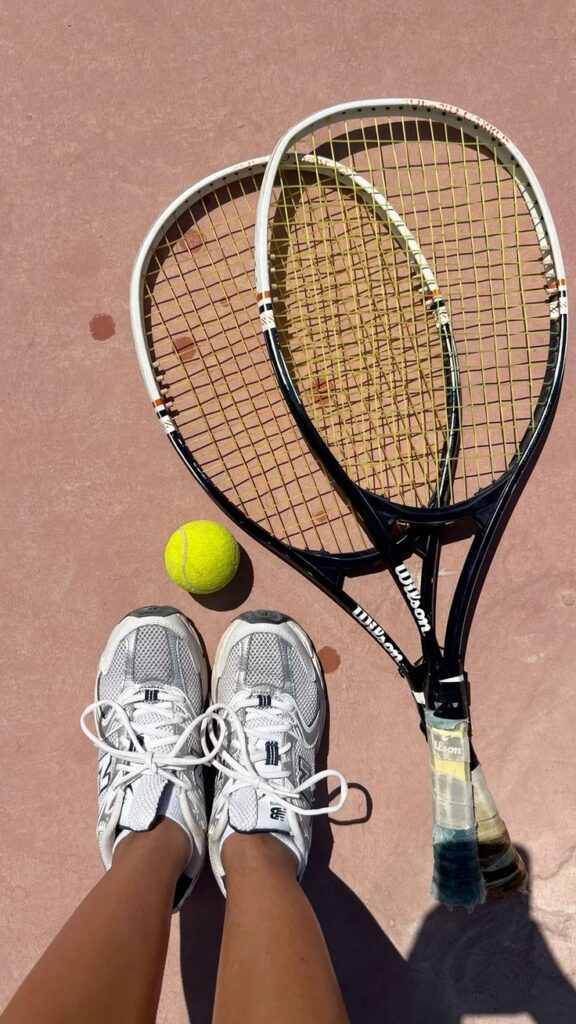

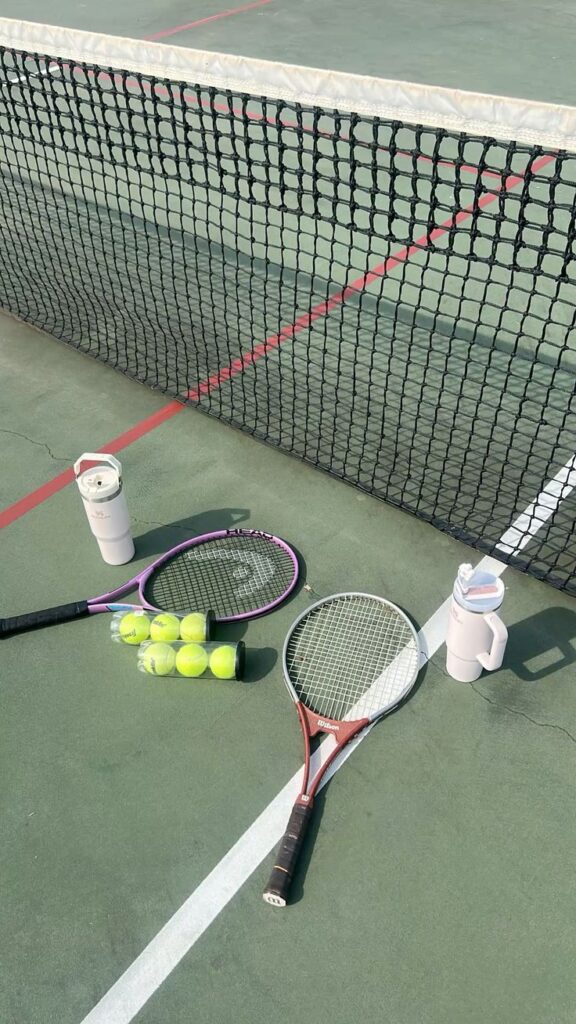
Before diving into the rules of play, it helps to understand the physical space of the game. A tennis court is a rectangle divided by a net. It has several key lines you need to know.
Court Dimensions and Lines
The court is standardized worldwide, but the playable area changes depending on if you’re playing singles or doubles.
- Length: The court is 78 feet long from baseline to baseline.
- Net Height: The net is 3.5 feet high at the posts and 3 feet high in the center.
| Line/Area | Description | Singles Width | Doubles Width |
| Baseline | The line at the very back of the court. You must serve from behind this line. | 27 feet | 36 feet |
| Sidelines | The lines that run the length of the court, defining the width. | Inner lines | Outer lines |
| Doubles Alley | The 4.5-foot wide area between the inner (singles) and outer (doubles) sidelines. Used only in doubles. | Out of bounds | In bounds |
| Service Line | A line parallel to the net, 21 feet from it. | – | – |
| Service Boxes | The two rectangles in the front court, created by the Service Line and the Center Service Line. A serve must land here. | – | – |
| Center Mark | A short mark bisecting the baseline, indicating the center point for serving. | – | – |
Types of Courts

The surface of a court significantly impacts how the ball behaves, which, in turn, influences strategy.
- Hard Courts: Made of asphalt or concrete, often covered with acrylic. They offer a consistent bounce and medium-to-fast speed. The majority of professional tournaments are played on hard courts.
- Clay Courts: Made of crushed shale, stone, or brick. They are the slowest surface, causing the ball to bounce higher and lose speed. This favors players with great endurance and defensive skill.
- Grass Courts: The fastest surface. The bounce is lower and can be unpredictable, favoring players who excel at serving and coming quickly to the net.
The Basic Rules of Play
Every point in tennis begins with a serve and continues in a rally until one player commits a fault or fails to legally return the ball.
Starting a Match: The Serve

The right to serve first is typically decided by a coin toss or a racquet spin.
- Server’s Position: The server stands behind the baseline, between the center mark and the sideline.
- Alternating Sides: The server must alternate serving from the right side of the center mark (called the deuce court) for the first point and the left side (the ad court) for the second point, and so on.
- Serving the Ball: The server tosses the ball into the air and hits it before it bounces. The ball must land diagonally across the net, inside the opponent’s service box.
- Two Chances: A server gets two attempts to make a legal serve.
- Fault: If the first serve is illegal (misses the service box, hits the net post, or the server steps on the baseline—a foot fault), it’s called a fault, and the server takes a second serve.
- Double Fault: If the second serve is also a fault, the server loses the point. This is a double fault.
- Ace: A serve that lands legally in the service box and the receiver cannot touch. This wins the point immediately.
- Let: If the serve touches the top of the net but still lands correctly in the service box, it’s a let, and the server gets to replay that serve attempt.
The Rally: Returning the Ball
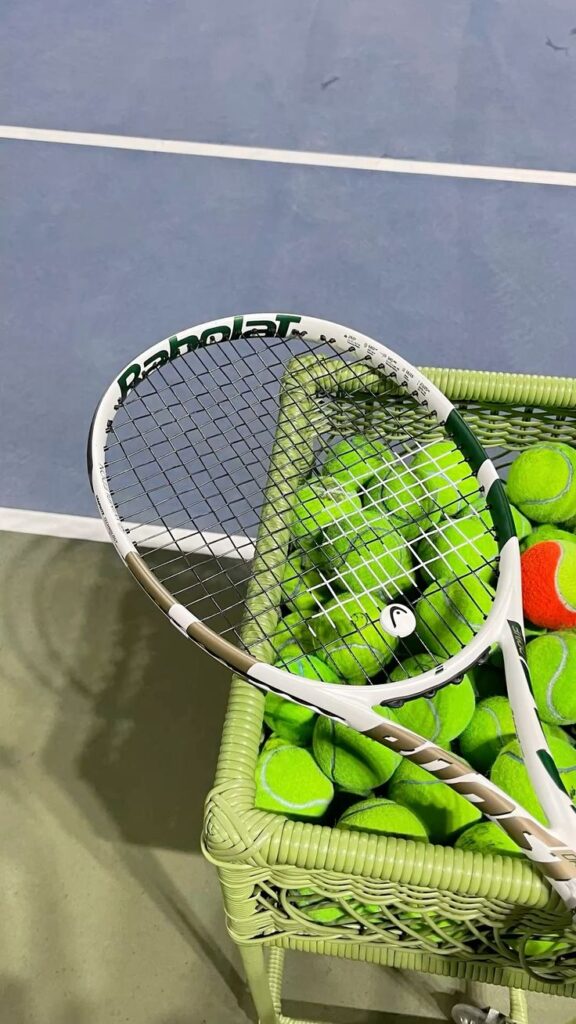

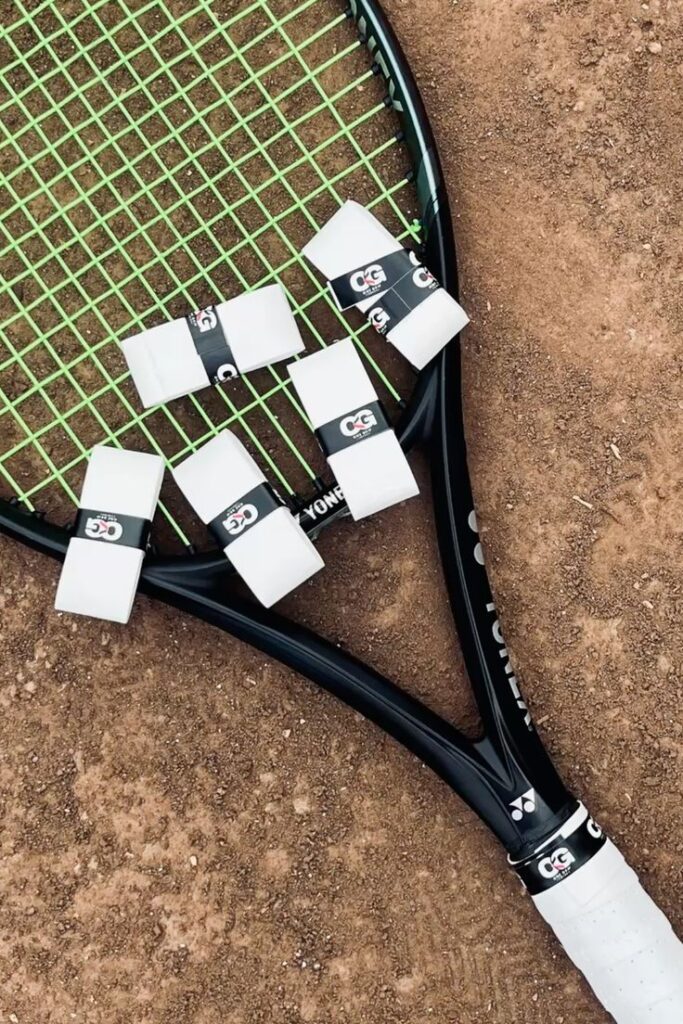
Once the serve is successfully put in play, the rally begins.
- Bounce Rule: The ball may only bounce once on your side of the net before you must hit it back.
- Net Clearance: The ball must travel over the net and land within the opponent’s court boundaries.
- Hitting Out: If you hit the ball out of bounds (outside the sidelines or baseline) before it bounces, you lose the point.
- Hitting the Net: If the ball hits the net and fails to cross to the opponent’s side, you lose the point.
- Double Bounce: If the ball bounces twice on your side before you hit it, you lose the point.
Tennis Scoring: Points, Games, Sets, and Matches

This is often the most confusing part for beginners, but once you break it down into its four stages, it becomes clear.
Stage 1: Winning a Game (The Unique Scoring)
A game is the smallest unit of scoring. To win a game, a player must win at least four points and lead by a margin of at least two points.
The scores within a game are not 1,2,3,4. They use a peculiar system:
| Points Won | Score Call | Explanation |
| 0 | Love | The score is announced as “Love-All” at the start. |
| 1 | 15 | Your first point. |
| 2 | 30 | Your second point. |
| 3 | 40 | Your third point. You are one point away from winning the game (a game point). |
| 4+ | Game | If you win the fourth point and you have a two-point lead, you win the game. |
Important Note on Scoring: The server’s score is always called first.
Example Score Progression:
- 0-0: “Love-All”
- Server wins point: 15-Love
- Receiver wins point: 15-All
- Server wins next point: 30-15
- Receiver wins next two points: 30-40 (The receiver has a break point, meaning if they win the next point, they “break” the server and win the game).
Deuce and Advantage: The Two-Point Margin Rule

The most famous—and confusing—part of tennis scoring happens when the score is tied at three points each, or 40-All.
- Deuce: When the score is 40-All, it is called Deuce. From this point, a player must win two consecutive points to win the game.
- Advantage (Ad): The player who wins the first point after Deuce has the Advantage.
- If the server wins the point, the score is called “Ad-In” (or Advantage Server).
- If the receiver wins the point, the score is called “Ad-Out” (or Advantage Receiver).
- Winning the Game: The player with the Advantage must win the next point to secure the game.
- Returning to Deuce: If the player with the Advantage loses the next point, the score reverts to Deuce, and the battle continues until one player wins two points in a row. This is how games can sometimes last for many minutes!
Statistical Insight: Games that go to Deuce often dramatically shift the momentum of a match. According to professional tennis data, the player serving at Deuce typically wins the game around 65%−70% of the time, highlighting the slight edge the server retains.
Stage 2: Winning a Set



A set is a collection of games.
- To win a set, a player must win at least six games and lead by a margin of at least two games.
- A score of 6−3, 6−4, or 7−5 wins the set.
- If the score is 5−5, play continues until the score is 7−5 or 6−6.
The Tie-break
If the game score reaches 6−6 in a set, a special game called a tie-break is played to determine the set winner.
- Scoring: Points in a tie-break are counted as 1,2,3,4, etc., instead of 15,30,40.
- The Goal: The first player to reach 7 points wins the tie-break and the set (with a final set score of 7−6), provided they lead by a margin of at least two points. If the score reaches 6−6, play continues until one player leads by two points (e.g., 8−6, 9−7, etc.).
- Serving in a Tie-break:
- The player whose turn it is to serve serves only the first point.
- The serve then alternates every two points until the tie-break is over.
- Players switch ends of the court every six points during the tie-break.
Stage 3: Winning a Match

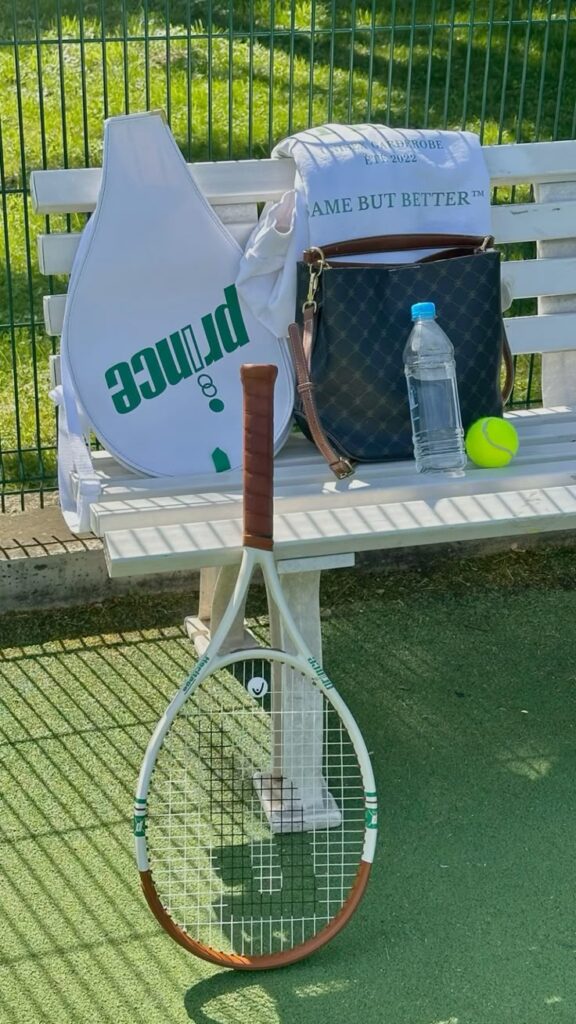

A match is a collection of sets. The format depends on the tournament.
- Best-of-Three Sets: The most common format for women’s professional tennis, and most men’s non-Grand Slam events. The first player to win two sets wins the match.
- Best-of-Five Sets: Used in men’s singles at the four Grand Slam tournaments (Australian Open, Roland Garros/French Open, Wimbledon, and US Open). The first player to win three sets wins the match.
A Match Example: If Player A wins the first two sets (6−4,6−3) in a best-of-three match, the match is over. Player A wins 2 sets to Player B’s 0.
Core Tennis Terminology for Beginners
As you watch or play, you’ll hear many unique terms. Here are the most essential ones:
| Term | Meaning |
| Love | Zero points. (Score: 30-Love means 30−0). |
| All | A tied score within a game (e.g., 15-All, 30-All). |
| Deuce | A tied score of 40-All. |
| Ad-In | The server has the Advantage after Deuce. |
| Ad-Out | The receiver has the Advantage after Deuce. |
| Game Point | A point that, if won, will win the game. |
| Break Point | A game point for the receiver (meaning they have a chance to win the game against the server’s serve, “breaking” their serve). |
| Set Point | A point that, if won, will win the set. |
| Match Point | A point that, if won, will win the match. |
| Ace | A legal serve that is untouched by the opponent. |
| Double Fault | Two consecutive illegal serves, resulting in the loss of the point. |
| Let | A serve that hits the net but lands in the correct service box; it is replayed. |
| Forehand | A stroke hit with the dominant hand, with the palm facing the direction of the stroke. |
| Backhand | A stroke hit with the non-dominant side of the body. |
| Volley | A shot hit before the ball bounces on your side of the court. |
| Lob | A high, arching shot over the opponent. |
Singles vs. Doubles: Key Differences

While the core scoring and rules remain the same, there are two key differences between Singles (one player per side) and Doubles (two players per side).
1. Court Width
- Singles: Players only use the inner sidelines (the 27-foot width). The doubles alley is out of bounds.
- Doubles: Players use the outer sidelines (the 36-foot width), which includes the 4.5-foot wide doubles alleys on both sides.
2. Serving Order in Doubles
- Team Service: In doubles, a team determines which player will serve the first game and which will serve the third, fifth, etc. The opponents do the same for the even-numbered games.
- Receiving Order: The two receiving players must decide who will receive the serve in the first point and who will receive the serve in the second point. They must maintain this receiving order for the entire set.
Case Study: No-Ad Scoring
In many recreational and some professional doubles formats (such as World TeamTennis), a system called “No-Ad” scoring is used to speed up play.
- Rule: If the score reaches Deuce (40-All), the next point is a sudden-death point that determines the game winner. There is no “Advantage” score.
- Receiver’s Choice: In this No-Ad system, the receiving team gets to choose which player will receive the serve on that decisive final point.
Conclusion: Get on the Court!

Tennis is often called “the sport of a lifetime” because it is a fantastic blend of physical agility, mental toughness, and strategy. While the scoring system might seem odd at first, it’s the element that creates so much of the game’s famous drama—the seemingly endless back-and-forth of Deuce and Advantage.
You now have a solid understanding of the court, the rules of play, and the unique path from “Love” to “Game, Set, Match.” The best way to solidify this knowledge is to practice it.
Your Call to Action: Find a local court, grab a racquet, and start hitting! Don’t worry about perfection; simply focusing on the process of serving legally and keeping track of the score will rapidly turn confusion into confidence.
Frequently Asked Questions
Q1: Why is “zero” called “Love” in tennis?
A: The term’s origin is debated, but the most popular theory suggests it comes from the French word “l’œuf,” meaning “the egg,” which resembles the shape of a zero (0). Another theory suggests it comes from the Dutch expression “iets voor lof spelen,” meaning to play “for the honor” or “for the love of the game,” without any monetary reward.
Q2: Why does the score go 15,30,40 instead of 1,2,3?
A: The 15,30,40 system is believed to have originated in medieval France, possibly based on a clock face. Points were marked by moving a hand 15 minutes at a time (to 15,30, and 45). It is thought that the 45 was shortened to 40 over time for simplicity and ease of announcement.
Q3: What is a “break” in tennis?
A: A break occurs when the receiver wins the game. Since the server is statistically expected to win the game (they have the advantage of starting the point), winning a game against the server is called “breaking their serve.” This is a key strategic moment and often a major momentum swing in a match.
Q4: When do players switch sides of the court?
A: Players switch ends of the court after the first game, and then after every odd-numbered game in the set (1,3,5,7, etc.). This is done to ensure fairness by evening out any advantages from elements like sun, wind, or court surface. Players also switch ends every 6 points during a tie-break.
Q5: How is the server determined for the next set?
A: The player who received serve in the last game of the preceding set will be the server for the first game of the new set. Service always alternates game by game throughout the entire match.




